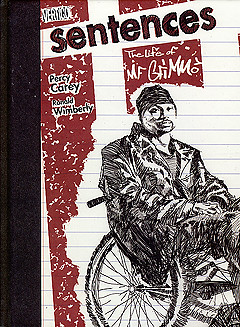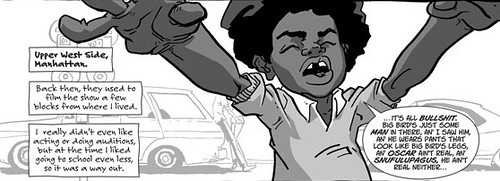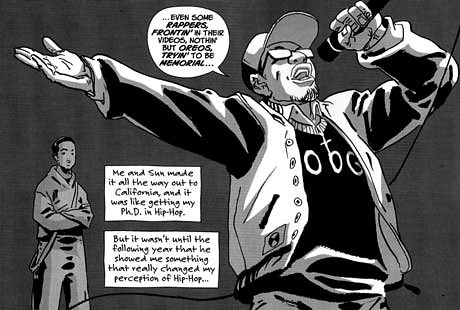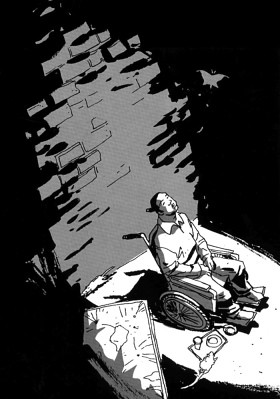I actually read this awhile ago and wrote a short review for School Library Journal, but never bothered to write up anything for this glorious space here. I had mixed feelings about this book, and I got a bit lazy. But Percy Carey's graphic novel Sentences seemed to be on everyone's mind when I was at the ALA conference a week ago. Vertigo/DC had a table in the showroom and was pushing it hard, but several people were just talking about it. People who don't know much about graphic novels were asking me about this title when they learned I read comics. It was only yesterday after I bothered to do some searches online that I found it's on a ton of best of 2007 lists. So I figured I had to toss in my 2 cents.
Author Percy Carey is better known as the underground hip-hop front man and lyricist MF Grimm. Billed as his first literary work, Carey uses the form of the graphic novel to bring a dark and frank portrayal of his own life. The story opens with Carey as a young boy growing up in NY City and working as a child actor on the set of Sesame Street. It’s a great opener for the book, all told with dark humor as Carey spoils the magic of television by telling his friends about the actors inside the suits of Big Bird and Snuffleluffagas. Things quickly move to high school, and we see a contradictory teen who both loves to read books like To Kill a Mockingbird and to create all kinds of trouble in the halls of school and the streets of NY City.
Carey finally starts making his own way in life by joining the early 90's world of Hip Hop, entering Slam competitions and appearing on some early recordings. Fans of the time period will love the appearances of big names like GZA and Snoop Dogg and how they both helped and challenged Carey throughout his career. Unfortunately, to make ends meet Carey sells drugs with his older half-brother and runs across continual problems with the law and competitors. The latter portion of the book focuses on a shooting that leaves Carey paralyzed and how he learns to deal with his life in new, thoughtful ways.
The most immediate draw of the book is Ronald Wimberly's fantastic artwork (check out his blog for further samples of his style). He illustrates Carey's childhood in a manner that's slightly cartoony and fun, and then images get progressively realistic and dark as the portrayal of Carey's life continues. Full of solid blacks, whites, and grays, the pages are almost claustrophobic in the way the images threaten to crush Carey as he struggles to not just succeed but survive in this violent world.
Unfortunately, Carey breaks one of the big rules of storytelling; he does a lot of telling without really showing. His style is high on narration. While this makes the delivery personal---almost like a diary---through his strong voice, it limits the dramatic impact of the big events. The events in Carey's life move by rather quickly, weakening the impact of what would otherwise be a powerful message of hope and making your own second chances.
Carey's used to writing for hip-hop, not in developing a longer form tale. I suspect that has a large part to do with how he told his story. I just wish an editor had stepped in and made him expand things---with everything Carey covers this could have easily been another massive book of entertaining depth like Thompson's Blankets. I understand why so many have put this on their list of favorite books of 2007. The themes are big and challenging, and it addresses ideas all too often ignored in literature of any kind. But I came away a little let down by the promise of what should have been a fantastic book. It is a quick read, though. And fans of Hip Hop will enjoy both the core and the background to the story, while other readers might be drawn in by subject matter too rarely covered in comics.
Excelsior.




No comments:
Post a Comment